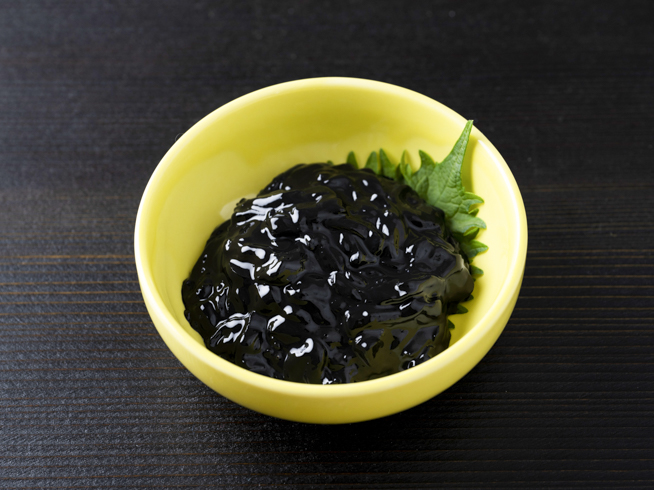Kurozukuri (Salted squid in ink) | Traditional Foods in Japan

Kurozukuri (Salted squid in ink)

ToyamaKurozukuri
Classification (Large)
Seafood
Classification (Small)
Fermented seafood products
Main ingredients used
Japanese flying squid flesh, squid ink
When using downloaded images, please read the "Terms of Use" and clearly state that the source of the image is "Traditional Foods in Japan" by the Ministry of Agriculture, Forestry and Fisheries.
If the photo credits is stated, please include it as well.
Example of description
of the photo credits
Example of description when the photo credits is not stated
Source: "Traditional Foods in Japan" Ministry of Agriculture, Forestry and Fisheries Example of description when the photo credits is stated
Source: "Traditional Foods in Japan" Ministry of Agriculture, Forestry and Fisheries
Photo credits:xxx
Region of inheritance
Throughout the prefecture
Product overview (special characteristics and types)
Kurozukuri is a type of shiokara created by thinly slicing Japanese flying squid and aging it with squid ink, and it is one of the popular unique delicacies of Toyama Prefecture. Unlike common red shiokara (akazukuri), this type has a glossy black appearance that often surprises people. However, kurozukuri does not have the distinct fishy scent typical of shiokara. Instead, glutamic acid and taurine found within the squid ink create a unique umami flavor. Squid ink is also said to have preservative properties, so it can be said that kurozukuri is a masterpiece dish that offers preservation, a unique aroma and taste, created from the wisdom of past ancestors.
In the 1990s, most of the 300 tons of shiokara produced annually in Toyama were kurozukuri, and the majority was consumed within the prefecture. However, in recent years, there has been an increase in orders from outside the prefecture. Although most of the Japanese flying squid used are sourced from Himi and Shinminato fishing ports, there is also the hotaruika kurozukuri, which uses firefly squid from Toyama Bay, which is popular as well.
History and culture
Kurozukuri has a long history, with documents indicating that during a sankin-kotai, a Kaga lord had offered it to the shogunate as a specialty of the subsidiary domain Toyama and that the dish was highly praised for its taste.
Although kurozukuri is said to have originated around the Genroku era of the Edo period, the truth is still unknown. However, by the Kyoho era, the dish had evolved to its present form, with finely sliced Japanese flying squid mixed with its liver, ink and salt before being fermented. There is a letter from 1808 (Bunka 5) preserved in the Kirisawa library of the Namerikawa stronghold that contains the name kurozukuri.
Although it was common to prepare this dish at home until around fifty years ago, now most opt to purchase processed products.
Production method
Japanese flying squid is skinned and salt is sprinkled on it before being put to rest in the refrigerator. The liver is also salted on both sides before being refrigerated overnight. Drawing out moisture from the liver prevents any fishy odors. The next step is to thinly slice the squid's body, wipe off salt from the liver, and mix the combination with squid ink. This combination is mixed once a day and left to age in the refrigerator.
Kurozukuri used to have a higher salt content and was commonly aged for about a month. These days, a less salty version that ages in only one to two weeks is preferred.
Conservation and succession efforts
Various manufacturers in Toyama Prefecture produce kurozukuri, and it is widely available at Toyama supermarkets, large-scale shopping centers, and souvenir shops.
Although the dish was mainly consumed within the prefecture as a preserved food, word of its unique flavor spread throughout Japan, and kurozukuri has gradually transformed into a delicacy with a milder saltiness and a richer umami flavor developed to cater to a wider range of consumer preferences. Furthermore, quality control technologies have also improved, enabling distribution throughout the country, and today, there are many loyal customers throughout Japan.
Main consumption method
Enjoyed year-round as a side dish with rice or as an appetizer with alcoholic beverages.
Contact
Food Cultures Office, Overseas Market Development and Food Cultures Division, Food Industry Affairs Bureau, Ministry of Agriculture, Forestry and Fisheries
Tel:+81-3-3502-5516




